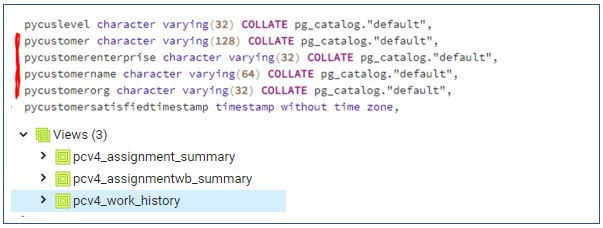Authored by Visu Nageswaran
Pega Platform™ provides the properties Work-.pyCustomer, Work-.pyCustomerOrg, and Work-.pyCustomerEnterprise with the intention to track all activities that are related to a single customer.

Observations
- While these properties have been optimized for reporting on tables that are mapped to the case types and the
pyCustomerproperty is propagated to the assignment records, thepc_assign_worklistandpc_assign_workbaskettables do not include these columns. - Classes
Data-Assignment-Summary,Data-Assignment-WBSummary,andData-Work-Historyare mapped to viewspegadata.pcv4_assignmentwb_summary,pegadata.pcv4_assignment_summary, and the tablepegadata.pcv4_work_historyrespectively and include these columns. However, these classes have rules that have long been deprecated (LIST VIEWS and SUMMARY VIEWS and NO report-definitions) that imply that these are no longer used by newer (Pega 7 and later) customer implementations. - The column widths are varying for these properties and cannot hold values of case keys (
pzInsKeyandpxCoverInsKeycolumns are 255 characters wide).
While applications can use this pattern as a reference to track activity that is related to a single customer, they may not be able to directly use this the way it is currently provided.
Recommendations
- Define properties for identifiers to end with the string
IDorIdto indicate what value the property holds, for example,AccountID, orCustomerID. - Propagate the values from case instances into assignment records in the DT:
NewAssignmentspecialized in the application layer. - Optimize the property for reporting in both the tables that are mapped to the case type and the
pc_assign_worklistandpc_assign_workbasket. Ensure that the column sizes are of 255 characters. - Use report definitions to group by specific identifiers.
